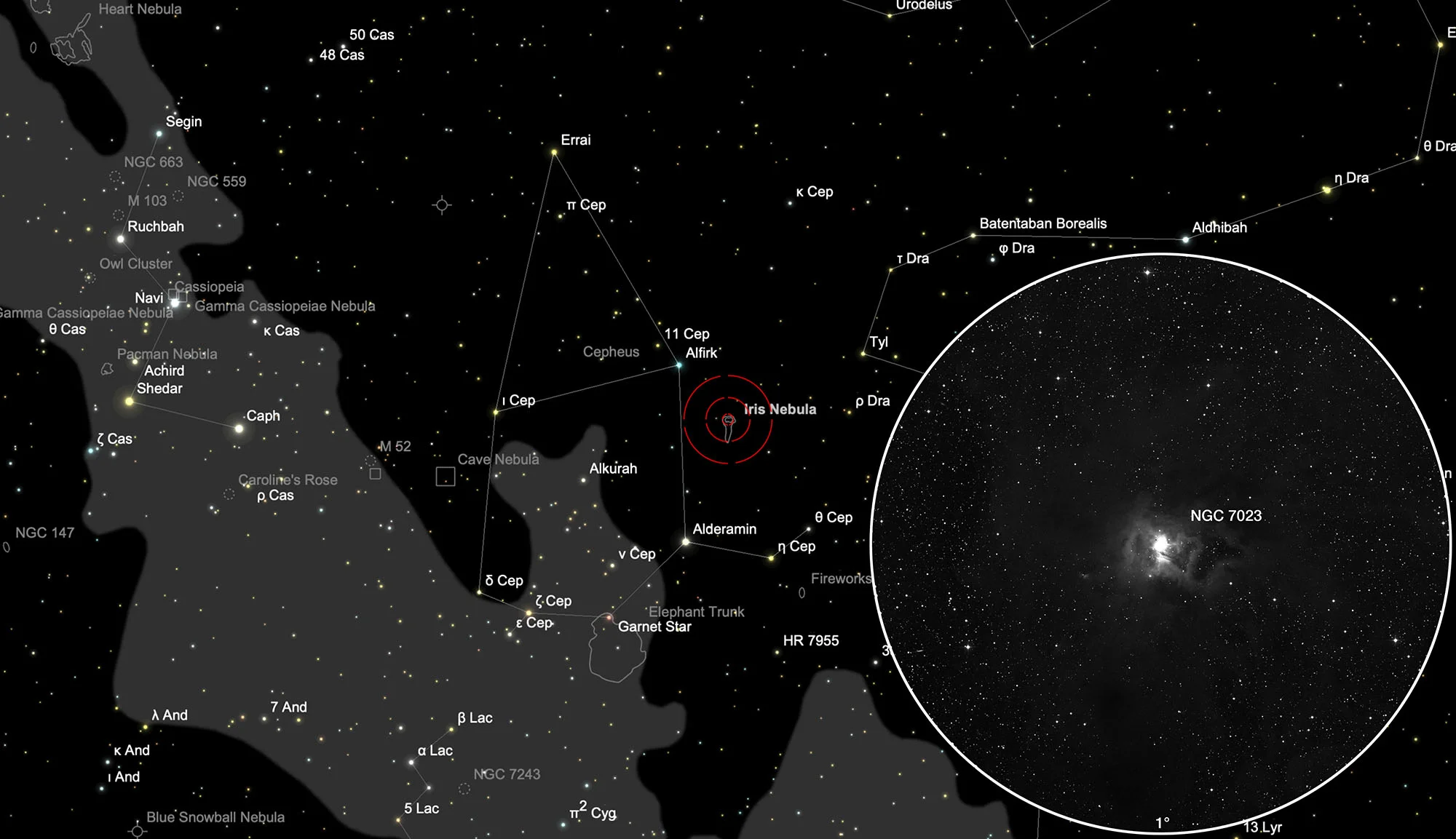Iris Nebula (NGC 7023)
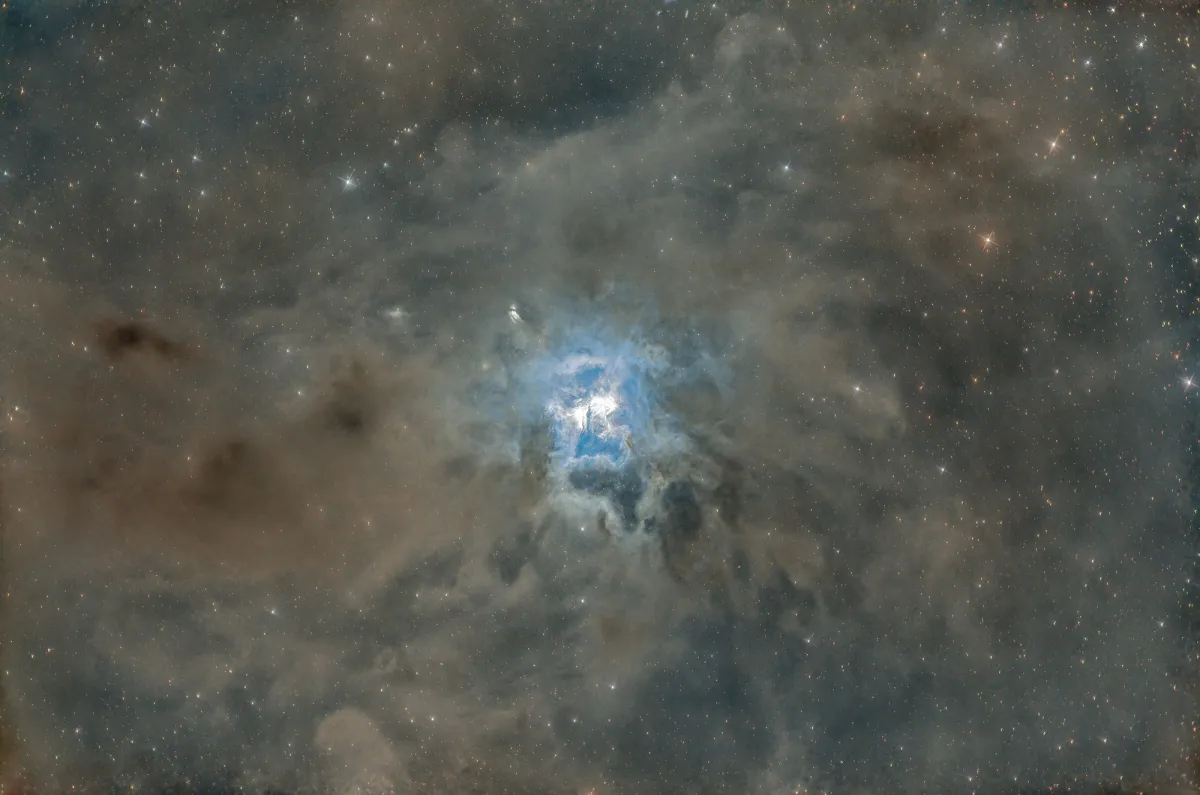
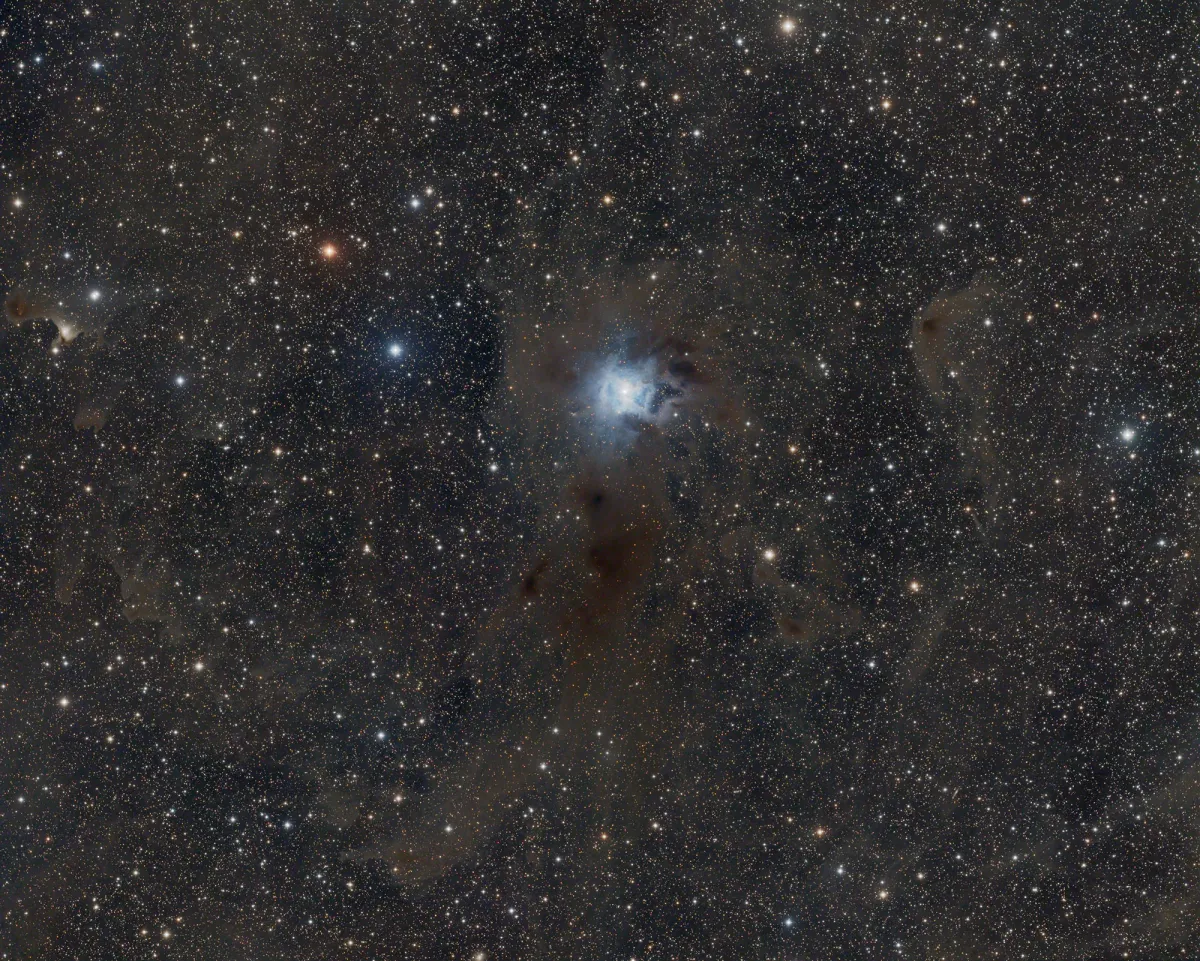
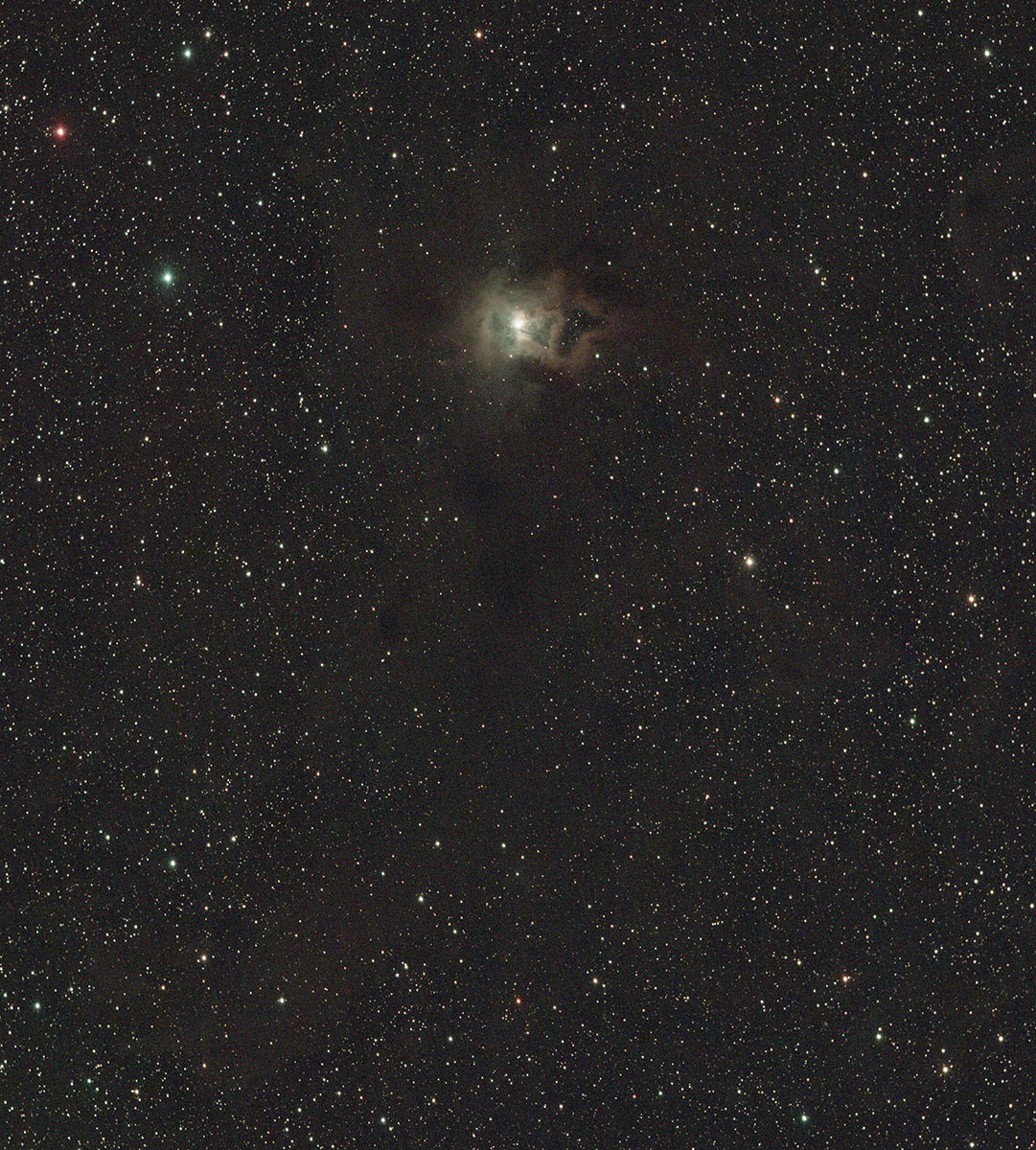

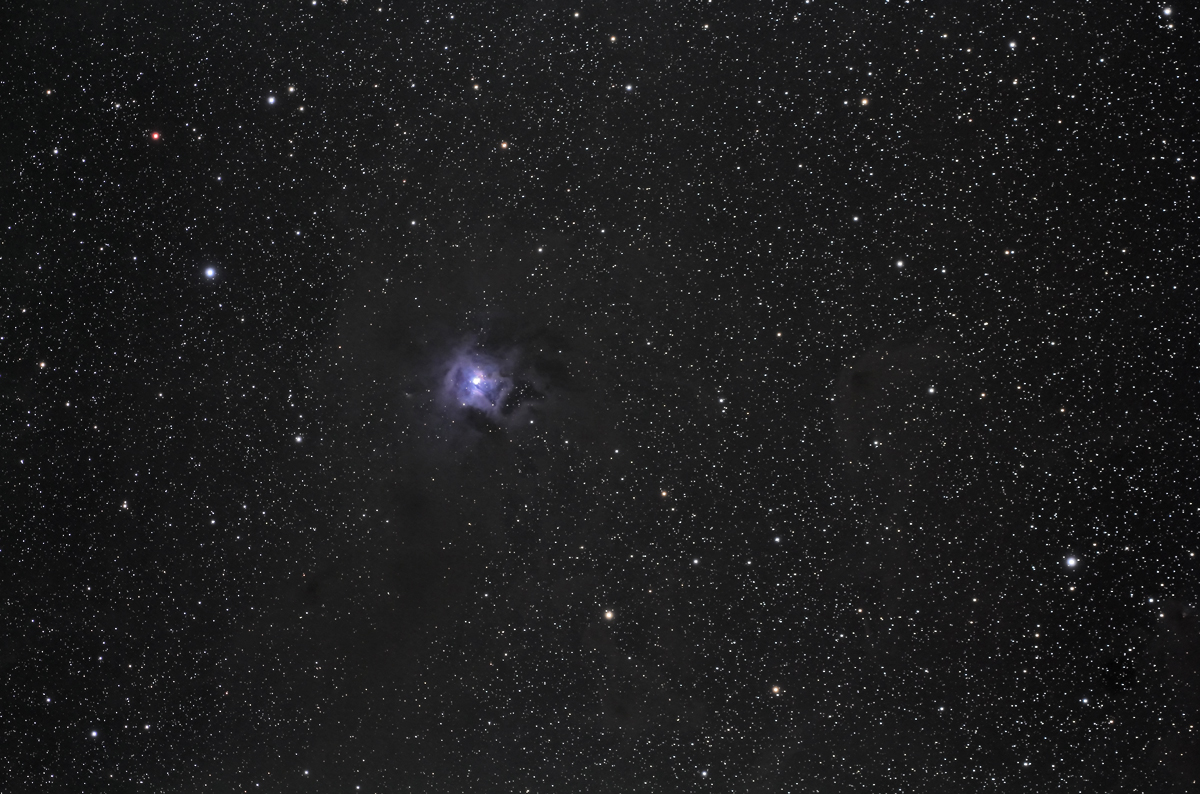
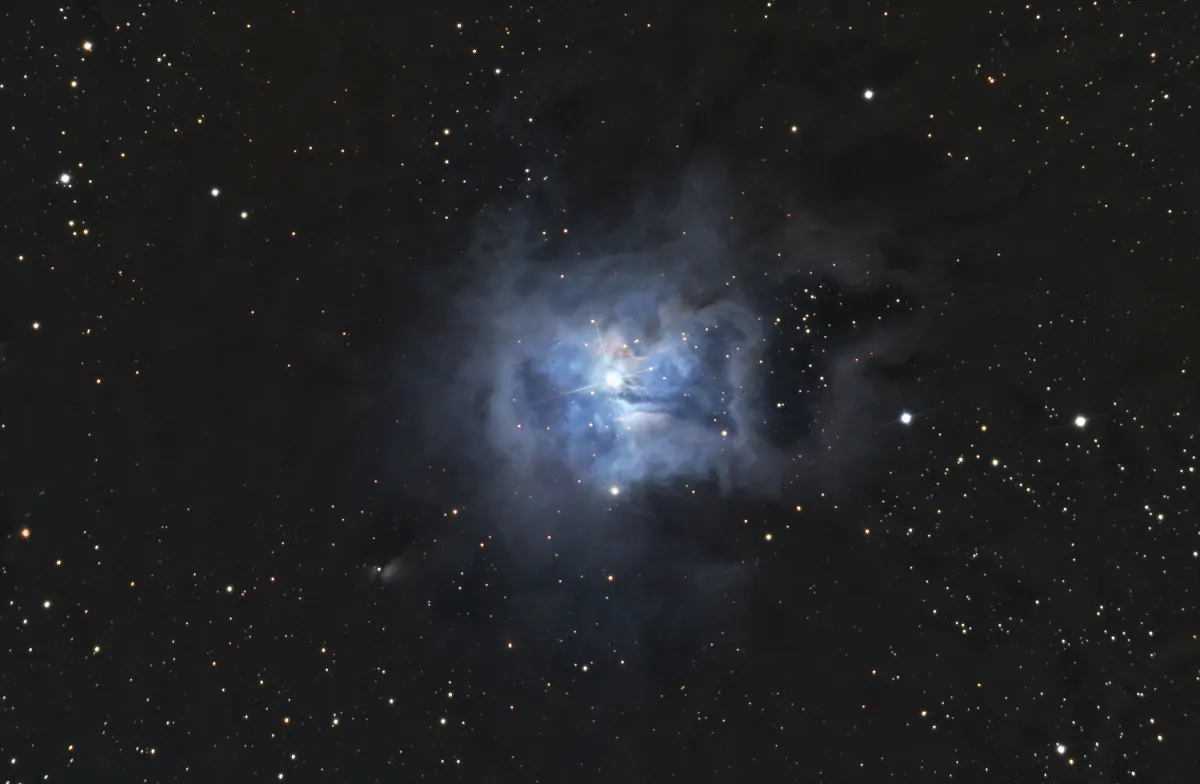
History
NGC 7023 is a small, poor open star cluster enveloped by a faint dusty nebula (LBN 487). It was discovered on 18 October 1794 by the German-British astronomer William Herschel. Dreyer described NGC 7023 as a 7th magnitude star embedded in a very faint but large nebula. The nickname «Iris Nebula» refers to the blue flowers of the iris (Iris versicolor) and not the iris of the eye, because of their colour and shape.
Physical Properties
The star HD 200775 is a hot, blue Herbig Be star with an apparent magnitude of about 7.4. It emits most of its radiation in the UV range. The mass is estimated at around 10 to 15 times that of the Sun and the age at just 100'000 years.
Outside of the reflection nebula, which is illuminated blue by the star, there are other nebulae, some faintly glowing, some made of dark interstellar dust. They are particularly noticeable because the apparent star density is lower there, as can be seen in Fig. 1. The nebula is an active star-forming region. Measurements by the Gaia probe gave a distance of 335 ± 11 pc (1093 ± 36 light years). The open star cluster is about 10 arc minutes in diameter, which is about three light-years at this distance. The reflection nebula is about twice as large. [109, 196, 260]
| Designation | NGC 7023 |
| Type | EN |
| Right Ascension (J2000.0) | 21h 01m 35.5s |
| Declination (J2000.0) | +68° 10' 10" |
| Diameter | 10 × 8 arcmin |
| Photographic (blue) magnitude | 7.1 mag |
| Metric Distance | 0.400 kpc |
| Dreyer Description | * 7 in eF, eL neby |
| Identification, Remarks | WH IV 74; GC 4634; LBN 487; OCL 235 |
Finder Chart
West of Cepheus' large alignment, which looks more like a child's drawing of a house than a king, lies the dust nebula NGC 7023. To find it, it is best to use a wide-field eyepiece and align the telescope with the help of the Telrad finder according to the adjacent map. Although the nebula is circumpolar, it is highest in the night sky from April to January. On 6 August it is in opposition to the Sun and crosses the meridian at local midnight.
Visual Observation
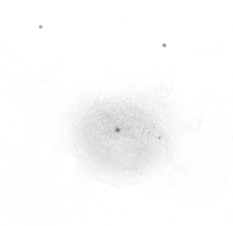
150 mm aperture: Its hazy appearance around a relatively bright star immediately gives the impression of a tarnished eyepiece. In fact, one has to be careful to find this rather difficult object to observe! The best magnifications proved to be 65x to 130x, without a filter, but with the eyepiece lens cleaned of dust (and dew). The large extent of the object is best seen with averted vision. Although there are differences in brightness, no structures can be made out. — 1996, Beat Kohler
762 mm aperture: The nebula is clearly visible around the bright star as a large, diffuse glow. With well-rested eyes, the two light-coloured trapezoids and each within a darker area were rudimentarily recognizable. — 14. 8. 2021, Bernd Nies, Eduard von Bergen, 30" Slipstream Dobsonian, Hasliberg
